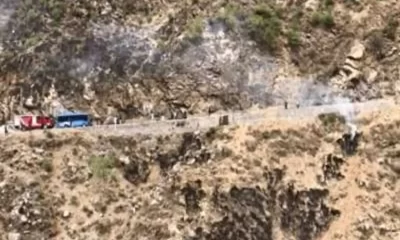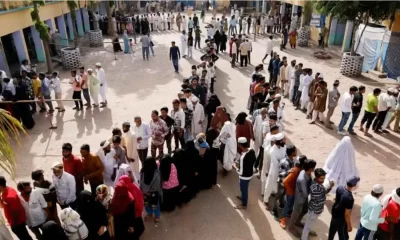Latest world news
Most international migrants are from India, no. of migrants into India declined from 1990s
India tops the world as country of origin of international migrants, while the number of international migrants within India has been declining.
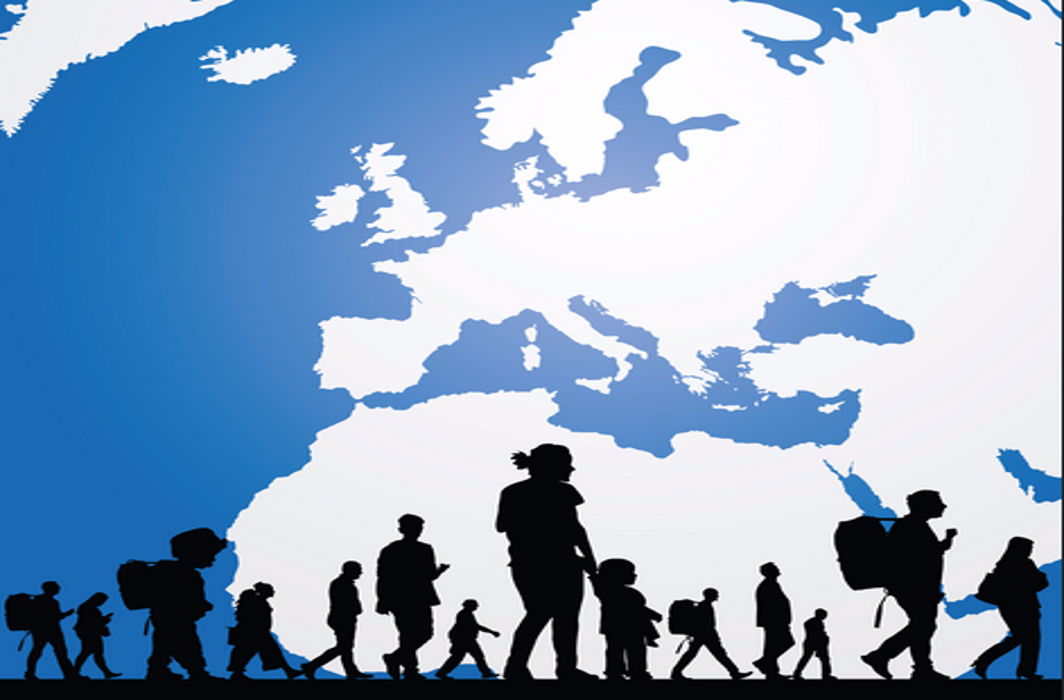
While the government builds up a campaign against foreign migrants and refugees here, the irony is it is India that tops the world as country of origin of international migrants, while the number of international migrants within India has been declining.
According to the International Migrant Stock 2019, a dataset released by the Population Division of the UN Department of Economic and Social Affairs (DESA) today – Wednesday, September 18 – India was the leading country of origin of international migrants in 2019 with a 17.5 million strong diaspora.
The number of migrants globally reached an estimated 272 million, 51 million more migrants in the world in 2019 than in 2010, a 23 per cent increase. It said migrants account for 3.5 per cent of the world’s population today, compared with 2.8 per cent in 2000.
Europe and North America have absorbed the largest share of the world’s 272 million migrants: there were 82 million migrants living in Europe and 59 million in North America in 2019, followed by northern Africa and western Asia with 49 million each.
The estimates are based on official national statistics on the foreign-born or the foreign population obtained from population censuses, population registers or nationally representative surveys.
Top 10 countries of origin
The top 10 countries of origin account for one-third of all international migrants. In 2019, with 17.5 million persons living abroad, India was the leading country of origin of international migrants.
The graph from the report also indicates that the outflow from India rose suddenly after 2005.
Top 20 countries of origin of international migrants
Migrants from Mexico constituted the second largest diaspora (11.8 million), followed by China (10.7 million), Russia (10.5 million), Syria (8.2 million), Bangladesh (7.8 million), Pakistan (6.3 million), Ukraine (5.9 million), the Philippines (5.4 million) and Afghanistan (5.1 million).
No. of migrants and refugees in India
India hosted 5.1 million international migrants in 2019, less than the 5.2 million in 2015. International migrants as a share of total population in India was steady at 0.4% from 2010 to 2019.
The country hosted 207,000 refugees, the report said, adding that refugees as a share of international migrants in the country was four per cent. Among the international migrants in the country, the female population was 48.8% and the median age of international migrants was 47.1 years.
The highest number of international migrants in India were from Bangladesh, Pakistan and Nepal.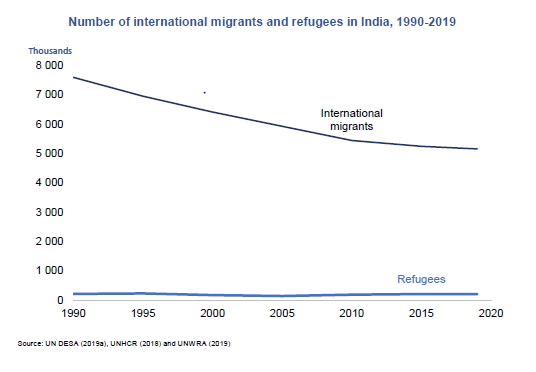
Regions and countries hosting largest no. of migrants
In 2019, regionally, Europe hosted the largest number of international migrants (82 million), followed by Northern America (59 million) and Northern Africa and Western Asia (49 million).
At the country level, about half of all international migrants reside in just 10 countries, with the United States of America hosting the largest number of international migrants (51 million), equal to about 19% of the world’s total.
Germany and Saudi Arabia host the second and third largest numbers of migrants (13 million each), followed by Russia (12 million), the United Kingdom (10 million), the United Arab Emirates (9 million), France, Canada and Australia (around 8 million each) and Italy (6 million).
Countries hosting largest no. of migrants
Share of migrants in population
The share of international migrants in total population varies considerably across geographic regions with the highest proportions recorded in Oceania (including Australia and New Zealand) (21.2%) and Northern America (16.0%) and the lowest in Latin America and the Caribbean (1.8%), Central and Southern Asia (1.0%) and Eastern and South-Eastern Asia (0.8%).
A majority of international migrants in sub-Saharan Africa (89%), Eastern and South-Eastern Asia (83%), Latin America and the Caribbean (73%), and Central and Southern Asia (63%) originated from the region in which they reside.
By contrast, most of the international migrants that lived in Northern America (98%), Oceania (88%) and Northern Africa and Western Asia (59%) were born outside their region of residence.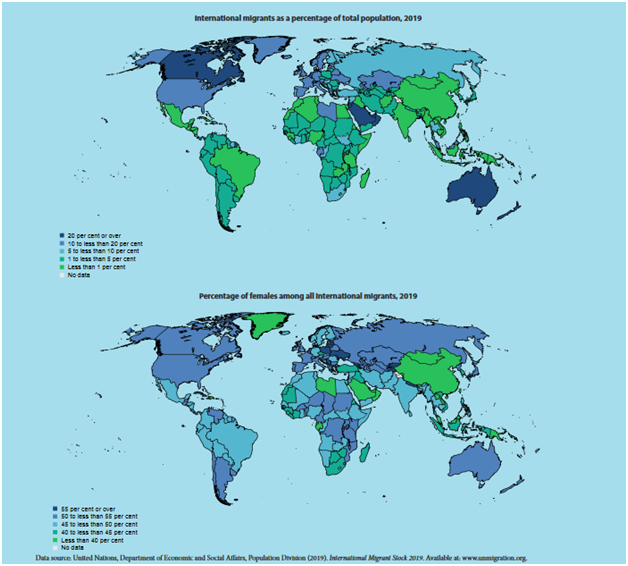
Forced displacements
The report added that forced displacements across international borders continues to rise.
Between 2010 and 2017, the global number of refugees and asylum seekers increased by about 13 million, accounting for close to a quarter of the increase in the number of all international migrants.
Northern Africa and Western Asia hosted around 46% of the global number of refugees and asylum seekers, followed by sub-Saharan Africa (21%).
Gender-wise
Turning to the gender composition, women comprise slightly less than half of all international migrants in 2019.
The share of women and girls in the global number of international migrants fell slightly, from 49% in 2000 to 48% in 2019.
The share of migrant women was highest in Northern America (52%) and Europe (51%), and lowest in sub-Saharan Africa (47%) and Northern Africa and Western Asia (36%).
In terms of age, one out of every seven international migrants is below the age of 20 years.
Migration and development
The link between migration and development is “very well established,” Director for DESA’s Population Division, John Wilmoth told reporters at the UN, echoing the message from the Department’s Under-Secretary General ahead of the report release.
The data “are critical”, Llu Zhenmin said, “for understanding the important role of migrants and migration in the development of both countries of origin and destination.”
“Facilitating orderly, safe, regular and responsible migration and mobility of people will contribute much to achieving the Sustainable development Goals,” he urged.
Wilmoth said as a general observation, the contribution of migrants both in host countries and countries of origin, includes sending valuable remittances back to countries of origin, and a major social contribution through transmission of ideas.
The United Nations is committed to supporting safe migration, through international agreements to safeguard refugees and people on the move at large, said a statement from the organisation. The Global Compact on Refugees, and Global Compact for Safe, Orderly and Regular Migration, were adopted in December of last year.
Latest world news
Bigg Boss 14 contestant Rahul Vaidya struggles walking in knee deep water, compares Dubai rains with Mumbai floods
Singer and TV personality Rahul Vaidya was recently stranded in the Dubai rains.
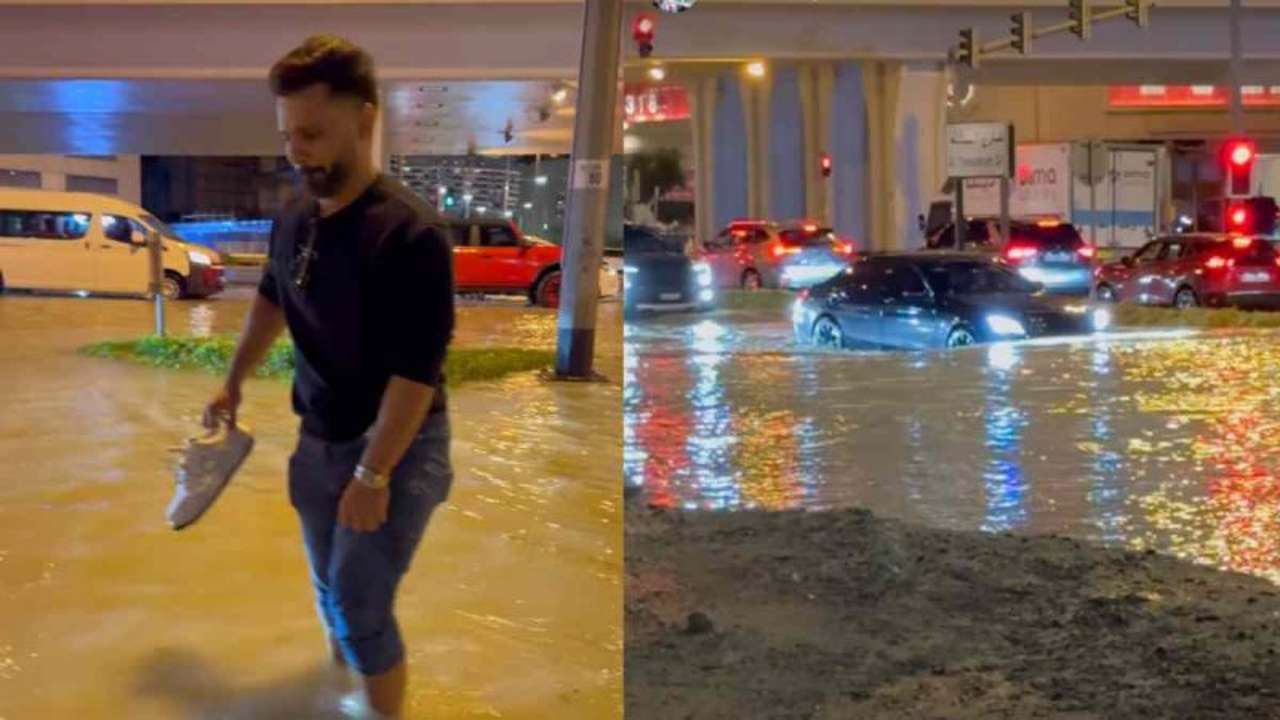
Rahul Vaidya, who was in Dubai ahead of his show which was scheduled to take place today, left the country due to heavy rains and reached Kolkata. The artist shared on social media his encounters in the UAE city, including challenges like walking through knee-deep water. Rahul provided an update regarding the heavy rainfall in Dubai on his Instagram profile.
The Bigg Boss 14 contestant revealed that he was in Kolkata and prepared to do an evening performance. Recalling the terrifying period he went through, Vaidya said there was a lot of confusion and panic in Dubai. The situation was similar to that when heavy floods hit Mumbai in 2005.
Vaiday also posted seval other images and videos of cars that were underwater and flooded roadways. The Bigg Boss 14 contestant, who shared his ordeal, claimed that even though it had just rained for two hours, the situation was dire.
In one of the video, which went viral he can be seen struggling in walking in knee-deep water. He can be also seen holding his sneakers in one hand and with other hand he was seen managing other things.
This is the result of the two hours of rain that it had, he can be heard saying in the video. Vidya also said he dosen’t believe Dubai is accustomed to a lot of rain. Everything had stopped working, he remarked.
After taking part in the first season of the singing reality show Indian Idol, Rahul Vaidya gained widespread recognition. In addition to Bigg Boss, he took part in Khatron Ke Khiladi 11.
Meanwhile, heavy rains that triggered flooding in the UAE and Bahrain, which left 18 people dead in Oman on Sunday and Monday, have paralyzed the financial hub of the Middle East, Dubai.
A lot of incoming flights were diverted from Dubai’s international airport because of the rain. At 7:26 p.m., the busiest airport in the world for foreign visitors stopped accepting new arrivals; a gradual resumption was announced for more than two hours later.
Images of planes navigating flooded tarmacs are making the rounds on social media.
According to pictures shared on social media, the flagship malls Dubai Mall and Mall of the Emirates both experienced heavy floods, while at least one Dubai Metro station had water up to the ankles.
There were several road collapses, severe flooding in residential areas, and numerous reports of leaks from windows, doors, and roofs.
Due to the unfavourable weather, schools around the United Arab Emirates were forced to close, and as more storms are predicted, the closures are anticipated to last until Wednesday. The government of Dubai allowed its staff to work remotely till this Wednesday.
Latest world news
Dubai sky turns green during storm in UAE, video goes viral
The UAE witnessed record-breaking rainfall on Tuesday and the National Centre of Meteorology recorded 254 mm of rainfall in less than 24 hrs in the Khatm Al Shakla area in Al Ain.
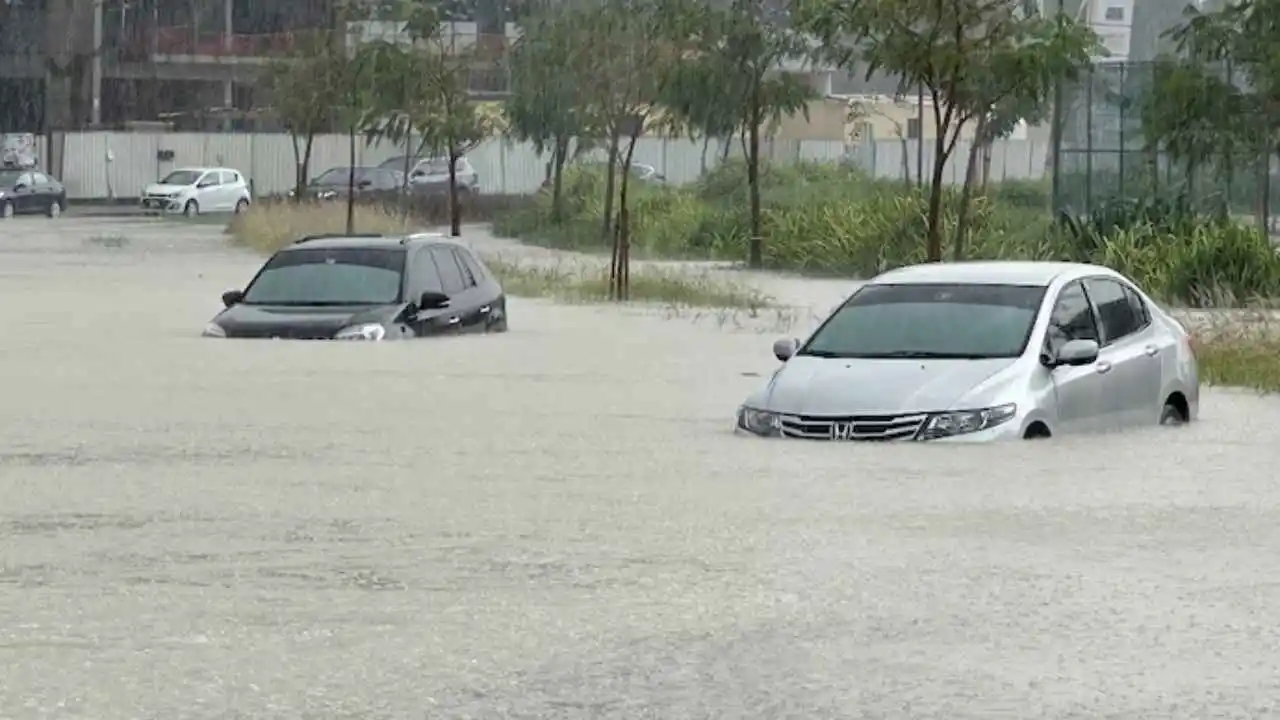
1 person was killed in UAE as it witnessed heavy rainfall on Tuesday, stranding commuters, flooding roads, disrupting trains and flights and resulting in water leakage from mall ceilings. The UAE witnessed record-breaking rainfall on Tuesday and the National Centre of Meteorology recorded 254 mm of rainfall in less than 24 hrs in the Khatm Al Shakla area in Al Ain. It is being said that the rainfall was the highest documented since the start of data collection in 1949.
The heavy rainfall in UAE came days after a similar situation in neighbouring Oman, where 13 people were killed in flash floods. Many parts of Oman saw torrential rains, which caused students to be trapped in buses and swept away motorists and trapped people in their homes.
Videos from Dubai circulating on social media showed widespread waterlogging on roads in Abu Dhabi, Dubai and other important cities. This left daily commuters in cars and other vehicles struggling to get back home. Dubai metro station too was seen flooded and closed.
One such video circulating on social media shows the aerial view of the city of Dubai from the top of a building. In the video the stormy winds are seen blowing over the city of Dubai. As the storm intensifies the Dubai sky turns green and ultimately gets covered by heavy rainfall. The video has gone viral on social media with more than 1.1 million views.
Another video showed water leakage from the ceilings of shopping malls, flooding the floors and destroying goods. A video which was shot in the famous Mall of the Emirates, showed pieces of ceiling falling as the rainwater gushed inside. Videos from many outlets of the Deira City Centre mall chain showed escalators being rendered unusable. Majid Al Futtaim, the company which owns the Mall of Emirates, said that the shopping complexes have been kept open and the customers are being sent away from the flooded areas.
India News
Sri Lankan Minister Douglas Devananda says statements on reclaiming Katchatheevu island from Sri Lanka have no ground
Devananda told the media on Thursday that it is not unusual to hear such claims and counterclaims about Katchatheevu as elections are taking place in India.

Sri Lankan Minister Douglas Devananda has said the statements from some political leaders in India on reclaiming Katchatheevu from the island nation have no ground. He told the media on Thursday that it is not unusual to hear such claims and counterclaims about the strategic island as elections are taking place in India.
The Sri Lankan Minister said he thought India is acting on its interests to secure this place to ensure Sri Lankan fishermen would not have any access to that area and that Sri Lanka should not claim any rights in that resourceful area. According to the 1974 agreement, Devananda said Indian and Sri Lankan fishermen can go fishing in the territorial waters of both countries until the pact was reviewed and amended in 1976.
The amended agreement resulted in fishermen from both countries being barred from fishing in neighboring waters. India’s ministry of External Affairs (MEA) on Thursday steered clear of the row surrounding Katchatheevu island. To a volley of questions on the Katchatheevu issue, MEA spokesperson Randhir Jaiswal reffered to External affairs Minister S Jaishankar’s recent comments on the matter.
He said he would like to talk about the issue that has been raised. He added the External Affairs minister has spoken to the press here in Delhi and also in Gujarat and has clarified all the issues. He said everyone should look into the press engagements and they would find the answers to their questions there.
The remarks from Devananda, a Sri Lankan Tamil, came days after the Narendra Modi government accused the Congress and its ally DMK in Tamil Nadu of overlooking national interests by handing over Katchatheevu island to Sri Lanka in 1974. The BJP has also been slamming the 2 parties for not ensuring the rights of the fishermen wanting to fish in waters around the island.
-
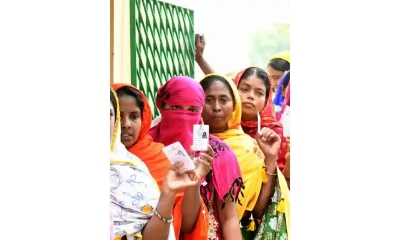
 2024 Lok Sabha Elections14 hours ago
2024 Lok Sabha Elections14 hours agoPrime Minister Narendra Modi urges citizens to vote in record numbers as voting for first phase of Lok Sabha elections begins on 102 seats across India
-

 2024 Lok Sabha Elections13 hours ago
2024 Lok Sabha Elections13 hours agoKamal Haasan, Rajinikanth, Vijay Sethupathi, Dhanush vote in Chennai
-

 2024 Lok Sabha Elections13 hours ago
2024 Lok Sabha Elections13 hours agoLok Sabha elections 2024: Google Doodle marks the start of polls with index finger voting symbol
-

 2024 Lok Sabha Elections13 hours ago
2024 Lok Sabha Elections13 hours agoLok Sabha elections 2024: TMC, BJP workers clash in West Bengal’s Cooh Behar ahead of voting
-

 2024 Lok Sabha Elections12 hours ago
2024 Lok Sabha Elections12 hours agoLok Sabha elections 2024: Newly married couple cast vote in Jammu and Kashmir’s Udhampur, video goes viral
-

 Entertainment9 hours ago
Entertainment9 hours agoDo Aur Do Pyaar social media review: Social media users say Vidya Balan, Pratik Gandhi deliver standout performances in this adorable film
-

 2024 Lok Sabha Elections12 hours ago
2024 Lok Sabha Elections12 hours agoTamil Nadu BJP chief K Annamalai says party will sweep Karnataka and emerge victorious in Telangana, accuses DMK, AIADMK of influencing voters in Coimbatore
-

 Entertainment11 hours ago
Entertainment11 hours agoYami Gautam starrer Article 370 releases on Netflix today









